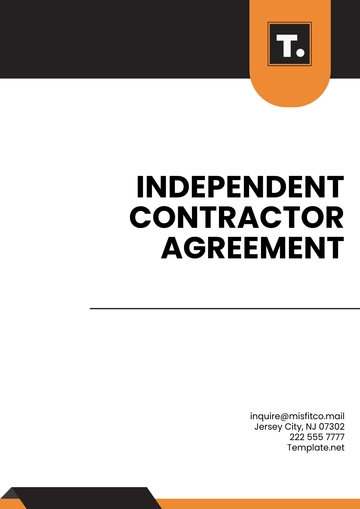Free Contract Governance Design Plan

Introduction
This Contract Governance Design Plan outlines the framework for managing and governing contracts within [YOUR COMPANY NAME]. It aims to ensure compliance, reduce risks, and promote effective collaboration between stakeholders throughout the contract lifecycle.
Objectives
Establish clear roles and responsibilities in contract management.
Enhance visibility and accountability in contract execution.
Ensure compliance with legal and regulatory requirements.
Streamline processes to improve efficiency in contract administration.
Scope
This plan applies to all contracts entered into by [YOUR COMPANY NAME], including but not limited to procurement, service agreements, partnership contracts, and non-disclosure agreements.
Key Components
1. Roles and Responsibilities
Contract Management Team: Responsible for the overall management of contracts, including drafting, negotiation, and execution.
Legal Department: Provides legal oversight, ensures compliance with laws and regulations, and reviews contracts for legal validity.
Procurement Team: Handles supplier negotiations and contract terms to align with organizational goals.
Finance Department: Reviews financial obligations and budgetary implications of contracts.
Senior Management: Provides strategic direction and oversight for contract governance policies.
2. Contract Lifecycle Management
Contract Creation:
Use standardized templates to ensure consistency and compliance.
Involve relevant stakeholders in the drafting process for input and alignment.
Contract Review and Approval:
Implement a clear approval workflow outlining necessary reviews by legal, finance, and management.
Establish timelines for review to prevent delays in contract execution.
Contract Execution:
Utilize electronic signature tools for efficient execution.
Maintain a centralized repository for all executed contracts for easy access and tracking.
3. Monitoring and Compliance
Performance Metrics:
Define key performance indicators (KPIs) to assess contract compliance and supplier performance.
Regularly review contract performance against established KPIs.
Compliance Audits:
Conduct periodic audits to ensure adherence to governance policies and legal requirements.
Address any identified compliance issues promptly and implement corrective actions.
4. Dispute Resolution
Dispute Management Process:
Establish clear procedures for raising and managing disputes arising from contracts.
Designate a dispute resolution team responsible for addressing conflicts and facilitating resolutions.
Escalation Procedures:
Implement a tiered escalation process to resolve disputes efficiently, starting with informal discussions and progressing to formal mediation if necessary.
5. Training and Awareness
Training Programs: Develop training sessions for employees involved in contract management to enhance understanding of governance processes and best practices.
Communication Plan: Regularly communicate updates to the Contract Governance Design Plan to all stakeholders to ensure ongoing awareness and compliance.
Conclusion
This Contract Governance Design Plan serves as a comprehensive framework for managing contracts within [YOUR COMPANY NAME]. By adhering to these guidelines, the organization can enhance contract management efficiency, ensure compliance, and mitigate risks associated with contractual relationships.
Appendix
Contract Template Samples: Standardized templates for common contract types.
Performance Metric Examples: Suggested KPIs for different contract categories.
Training Resources: Materials for employee training sessions on contract management best practices.
- 100% Customizable, free editor
- Access 1 Million+ Templates, photo’s & graphics
- Download or share as a template
- Click and replace photos, graphics, text, backgrounds
- Resize, crop, AI write & more
- Access advanced editor
Establish effective governance with the Contract Governance Design Plan Template from Template.net. This fully editable and customizable template allows you to outline governance structures and processes clearly. Utilize our AI Editor Tool to effortlessly modify sections to fit your specific needs, ensuring compliance and transparency in your contract management. Strengthen your governance framework today!
You may also like
- Rental Contract
- Contractor Contract
- Contract Agreement
- One Page Contract
- School Contract
- Social Media Contract
- Service Contract
- Business Contract
- Restaurant Contract
- Marketing Contract
- Real Estate Contract
- IT Contract
- Cleaning Contract
- Property Contract
- Supplier Contract
- Partnership Contract
- Food Business Contract
- Construction Contract
- Employment Contract
- Investment Contract
- Project Contract
- Payment Contract
- Student Contract
- Travel Agency Contract
- Startup Contract
- Annual Maintenance Contract
- Employee Contract
- Gym Contract
- Event Planning Contract
- Personal Contract
- Nursing Home Contract
- Law Firm Contract
- Work from Home Contract
- Software Development Contract
- Maintenance Contract
- Music Contract
- Amendment Contract
- Band Contract
- DJ Contract
- University Contract
- Salon Contract
- Renovation Contract
- Photography Contract
- Lawn Care Contract





























